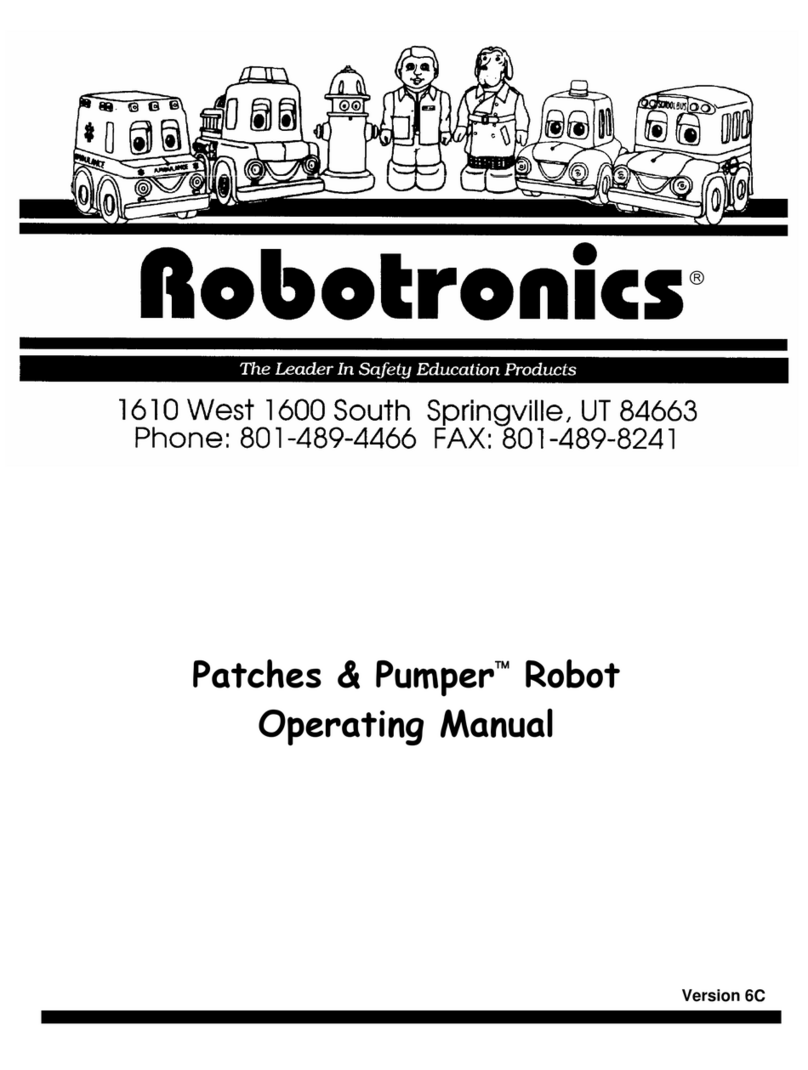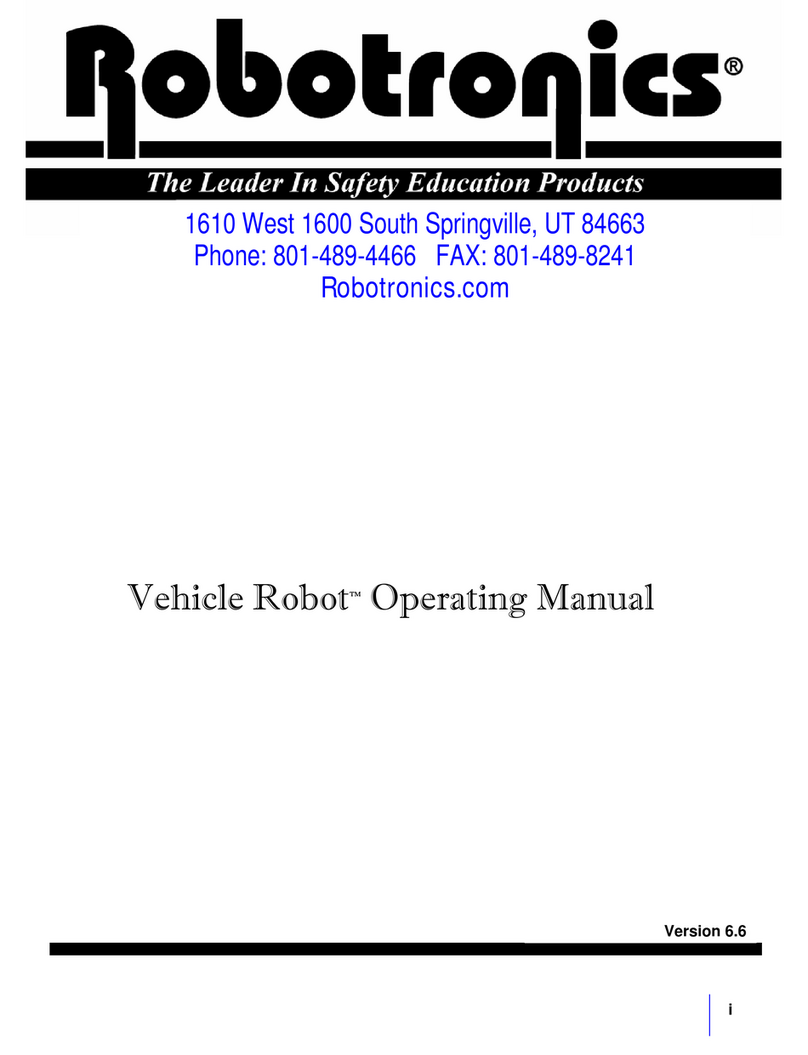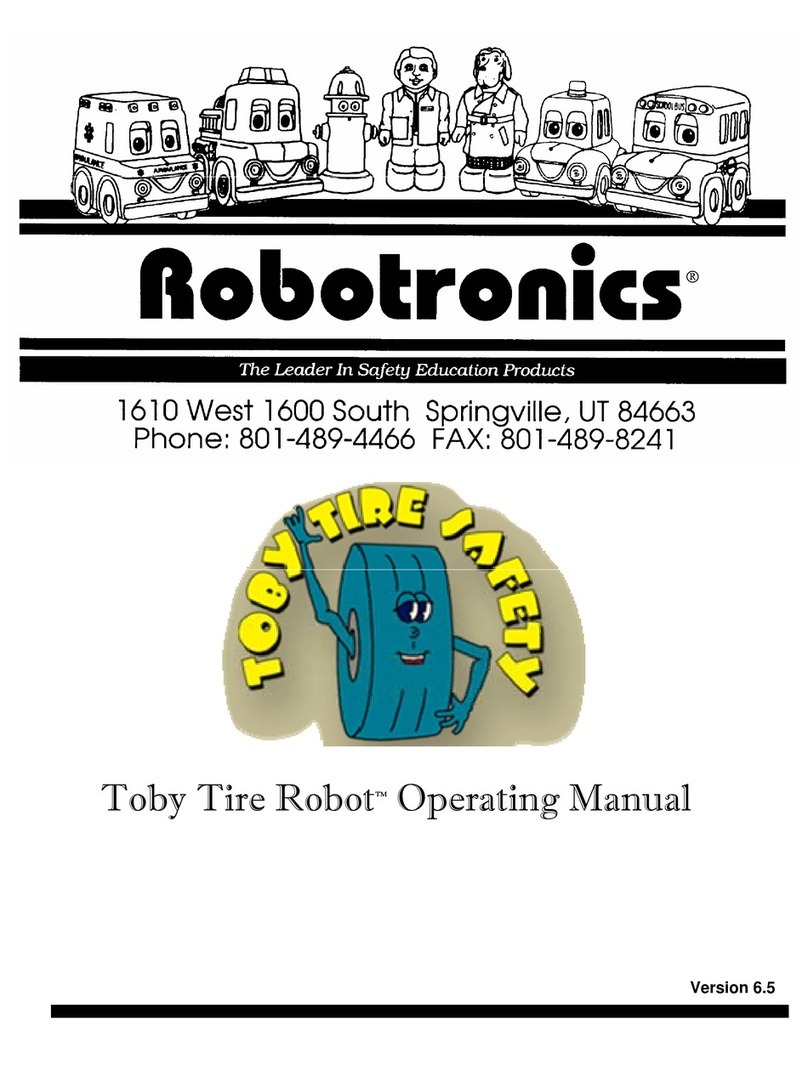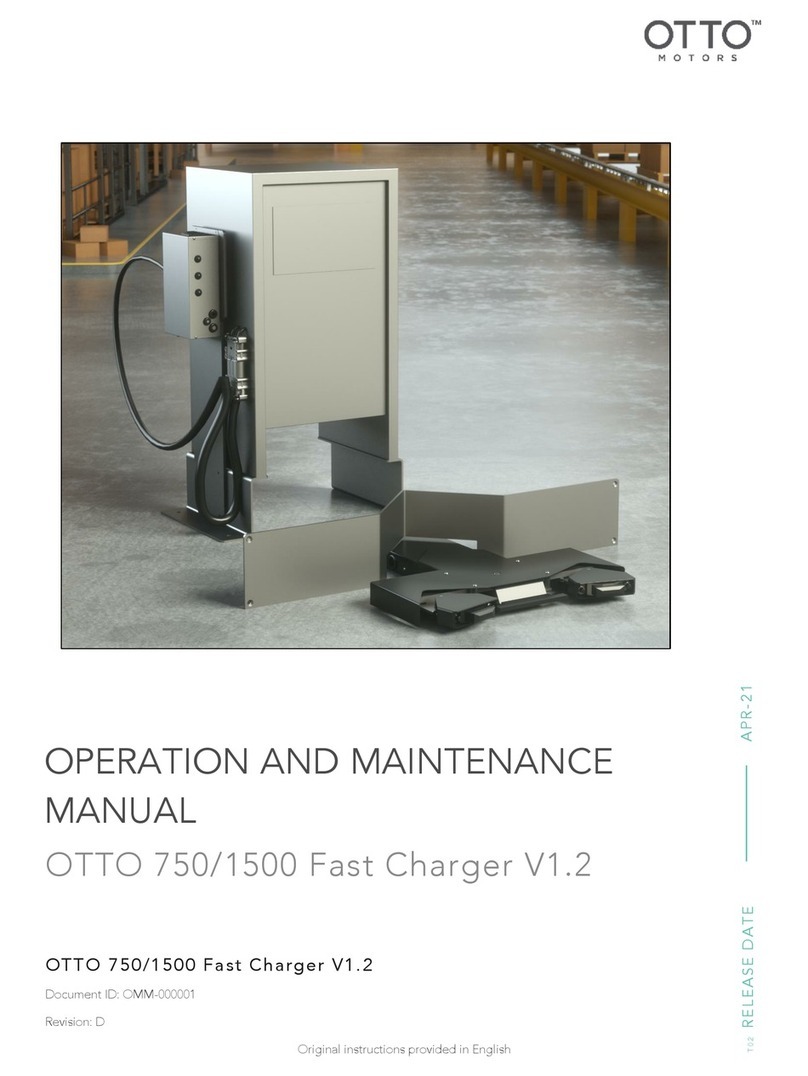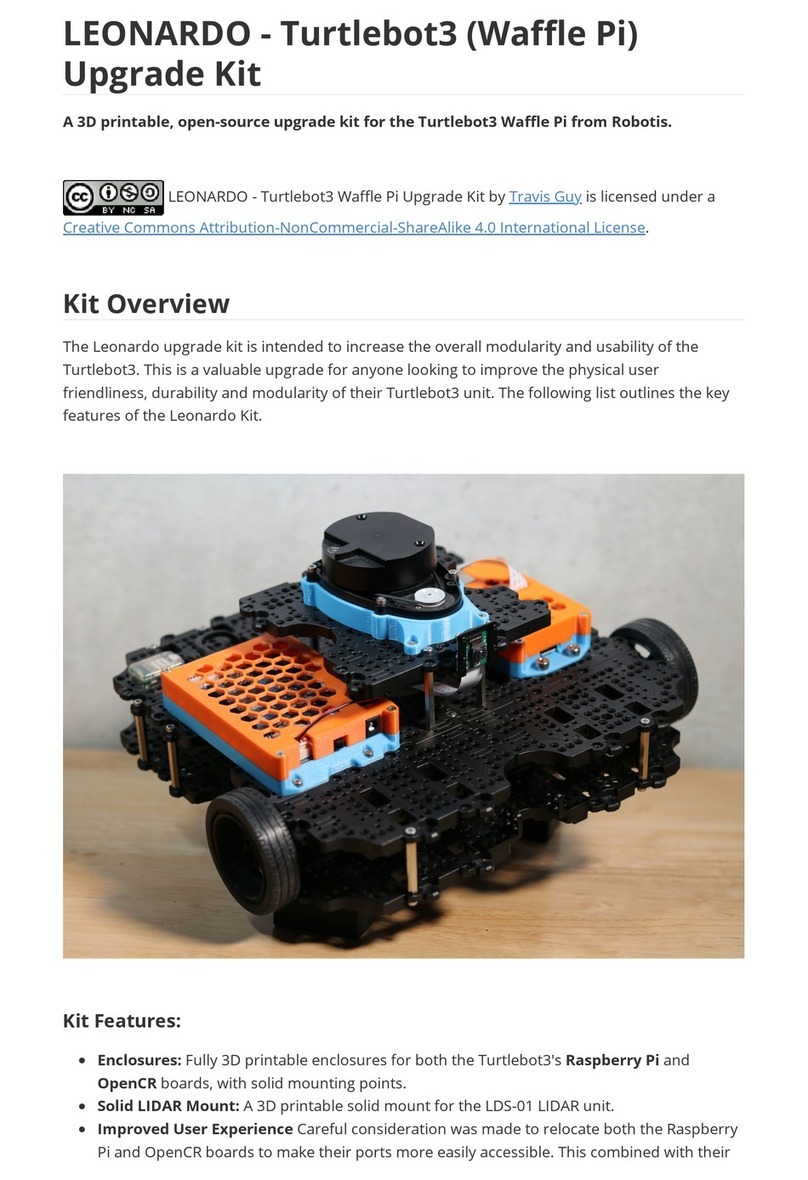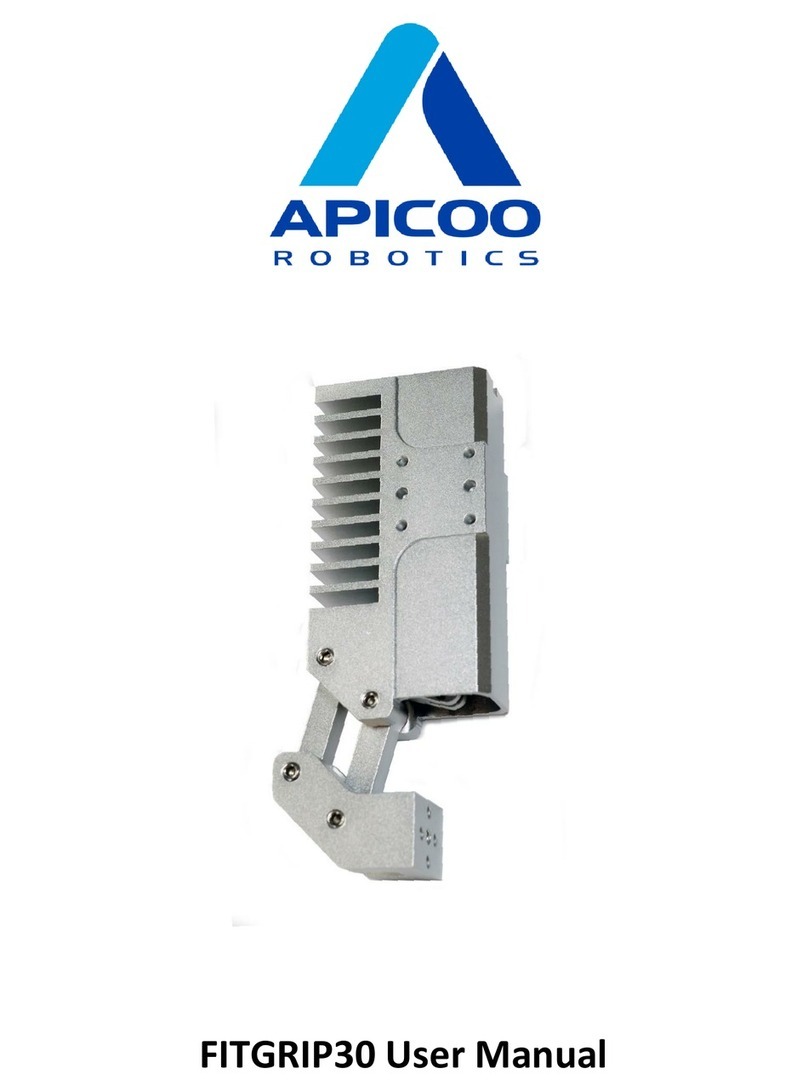Robotronics Pluggie Robot User manual

i
Pluggie RobotOperating Manual
1610 West 1600 South Springville, UT 84663
Phone: 801-489-4466 FAX: 801-489-8241
Robotronics.com
Version 7

ii
Pluggie Robot Operating Manual
Congratulations on your purchase of a ROBOTRONICS, Inc. robot.
Your robot has been carefully constructed of the highest quality components. Its
design is the result of years of experience building robots. You will find it an
extremely effective spokesman for your organization. It is built for ease of
operation, maintenance and repair. It is built so that you can easily expand its
functions making its usefulness grow as your needs grow.
Please read this manual carefully. It will help you make the most of your
robot. Attention to maintenance and proper training will greatly prolong the life
of your robot. Most problems you encounter will be minor and the manual will
provide an answer. Please feel free to contact us if you have unanswered
questions relating to operation, maintenance, and repair. Also, if you have
technical questions relating to expanding the functions of your robot, we would be
most happy to help.
Sincerely,
ROBOTRONICS, Inc.
ROBOTRONICS INC.
Springville, Utah 84663
www.Robotronics.com
Robotronics Inc., 2016.
Robotronics

iii
Contents
Warranty Information ............................................................................................1
PART 1 General Operating Instructions.........................................3
Chapter 1 Getting Started......................................................................3
Operating Hints ...................................................................................................3
Setup and How to Operate the Robot..................................................................4
Transporting the Robot........................................................................................6
PART 2 Subsystems of the Robot.....................................................7
Chapter 2 Radio Control System...........................................................8
Radio Control Operating Instructions...................................................................8
Radio Control Transmitter (Diagram)...................................................................9
Radio Control Transmitter Controls ...................................................................10
NI-MH R.C. Transmitter Battery.........................................................................12
Charging of the NI-MH R.C. Transmitter Battery (Diagram) ..............................12
Adapter for Charging and 110 V Power Supply.................................................13
Chapter 3 Voice System Overview......................................................14
Location of Voice Units......................................................................................14
Belt Transmitter.................................................................................................15
Robot Receiver..................................................................................................16
151 System (Robot TX and Belt 151 Receiver).................................................17
VR3U System....................................................................................................18
Voice System Troubleshooting..........................................................................20
Chapter 4 MP3 Player System .............................................................22
Chapter 5 Robot Battery Systems.......................................................24
Robot Battery ....................................................................................................24
Robot Battery Charger ......................................................................................25
Chapter 6 Drive Motor System ............................................................26
Chapter 7 LCD Interface........................................................................28
Chapter 8 Eyelids and Eyes Left and Right........................................29
Chapter 9 Optional Accessories
Water Squirter System...................................................................................30
Water Squirter System Diagrams.............................................................31
Pitch Shifter (Voice Modifier).........................................................................32
PART 3 Assembly & Disassembly................................................34
Contents

iv
Chapter 10 Assembly & Disassembly............................................................34
PART 4 Maintenance..............................................................................35
Chapter 11 Maintenance ......................................................................35
Regular Maintenance Checklist.........................................................................35
Recommended Tool Kit.....................................................................................36
Painting of the Body..........................................................................................37
Repair of the Body.............................................................................................38
Storage .............................................................................................................39
Appendixes
Appendix A..............................................................................................40
QUICK REFERENCE TROUBLESHOOTING.............................................41
Robot Circuit Block Diagram .............................................................................44
Appendix B Robot Parts Identification...............................................45
Robot Frame Front View ...................................................................................46
Robot Frame Rear View....................................................................................47
Processor Board................................................................................................48
Audio Mixer ...................................................................................................49
Drive Circuit Motor Controls...............................................................................50
Power Distribution Board...................................................................................51
Robot Frame Top View......................................................................................52
Cap Linear Actuator Assembly..........................................................................53
Base Frame –Bottom View...............................................................................54
Base Frame –Inside View.................................................................................55
Pluggie Eyes ...................................................................................................56
Servo On Off Board...........................................................................................57
Notes Section*.......................................................................................................58
Technical Tips Section*.........................................................................................59
* These sections can be used to place additional notes that you would like to record, during
your use of the robot.
Contents

1
Limited Warranty
All robots and accessories have a limited one year warranty, which covers all parts and labor.
This period covers the normal burn-in for electronic components. Experience has shown that
this warranty period catches most component defects and other possible flaws. If you have a
problem, we are anxious to help. Our desire is to be certain you receive a quality product and
excellent service.
Warranty work is specifically limited to correction of defects by repair or replacement of faulty
equipment or parts. The robot shall be repaired or replaced at Seller's option. Equipment
returned to the factory for repair must have pre-authorization from our service department and
must be sent freight pre-paid, and will be returned freight pre-paid by UPS ground or common
carrier. If you need parts sent by air shipment you will be responsible to pay the additional
shipping charges.
In no event shall ROBOTRONICS, Inc. be liable for any incidental or consequential damages in
connection with or arising from the use of the robot.
The buyer is further responsible to ensure that proper and complete training be given to those
operating the robot system as all aspects of such operation cannot be covered in a brief manual
such as this.
In no event shall ROBOTRONICS, Inc. be liable for any incidental or consequential damages in
connection with or arising from the use of this manual or any procedures contained herein.
Record The Robot’s Vital Information
If You Have a Problem
Call our service department and explain the problem. The phone number is (801) 489-
4466. Most difficulties are minor and can be solved easily over the phone. If possible,
have the robot near the phone when you call.
Warranty Information and Getting Help
Record the vital information from your robot here for future access
Date Received:
Customer Number:
Robot Model Number:
Robot Serial Number:
Brand of Radio Control:
Frequency of Radio Control:
Voice Frequencies
Operator Transmitter:
Operator Receiver:

2
Important: Have the robot serial number and model number ready. This will help our
technician identify the model of robot you have. The serial and model number sticker is located
under the cap. Pop the cap off and it is on the plastic cross piece.
If you must return a part or the robot for repair, pack it carefully and send it prepaid
according to instructions. You must obtain a return authorization number from the
service department before shipping the robot or a part to the factory.
Parts of the robot are best sent by a carrier such as UPS, Fed. Ex. or U.S. mail,
because shipping is based on the actual weight of the package. Be sure to insure the
shipment for the correct value. A freight company such as YRC or R&L Carriers should
be used only for the complete robot, because their shipping charges are based on 100
pound minimums.
For international shipments, you will be responsible for paying customs duties, taxes
and other fees. The shipment must be labeled on the paperwork and on the outside of
the container that it is “For Educational Purposes”. If it is a “warranty replacement”
or a “repair return” this also must be indicated both ways on the customs
documentation. Contact your customs agency on how to document the shipment
correctly to avoid unnecessary customs charges.
After The Warranty Repair and Help
Our technical staff is always available to help with your questions. Again, most problems are
easily solved. The robot is design is very modular to make removal of a part of the robot very
easy. For example the main electronics box, which houses most of the electronic circuitry, can
be removed from the frame of the robot. If you do need technical help or replacement parts,
call our Service Dept. We can usually ship them the following day you call. Please call our
service department for a return authorization number before sending a part or your robot in for
repair or modifications.
Service Department: 801-489-4466
Warranty Information and Getting Help

3
Part 1 General Operating Instructions
CHAPTER 1 Getting Started
OPERATING TIPS AND SAFETY INFORMATION
ROBOTRONICS, Inc. robots are a unique and exciting tool in the hands of a skilled and trained
operator. The operator provides much of the excitement the robot conveys. The selection and
training of the operator should be done carefully, so as to provide a person with good judgment
and an outgoing personality. The operator is the single most important feature that the robot
has. Nevertheless, with a little practice anyone can learn to operate the robot and even those
with a shy personality can be very effective using the robot. It is important that you observe the
following safety guidelines. Include this in any operator training. Practicing with the robot and
having a program outline or script will help you have success the first few times out.
Keep the robot indoors with the cover on when not in use. This will keep the robot clean
and the color at its best.
Operate the robot with charged batteries in the transmitter and robot.
Never operate the robot out of line-of-sight.
The operator must have the radio control in their hands when the robot is on. If you
need to set the radio control down, turn the robot off first.
Always have a trained person posted near the robot to help in crowd control, and to protect
the robot from vandalism. This person is also available to answer questions and interact
with the robot.
Operating distance should never exceed 100 feet. When moving the robot through crowds,
the robot should be operated slowly and smoothly without any sudden changes of direction.
Walls, turns, and other obstacles are hazards to be avoided. Safe clearance should be
maintained between these obstacles and the robot.
Never leave the robot "ON" when unattended or in direct sunlight for extended periods of
time.
The robot is designed to be operated on hard, smooth surfaces and carpet. Avoid extra
deep shag carpet, dirt, gravel, or grass surfaces. Avoid steep inclines or large uneven
surfaces such as curbs, gutters, or uncovered electrical lines.
When using the robot on a stage, the area just in front of the stage should be clear of
children for at least 10 feet.
When attempting to operate the robot for the first time, do so in a large flat area without
obstacles. The operation of the controls should be done in a smooth, fluid manner. Avoid
jerking starts and stops or overreacting to the controls. When first practicing movement, it
is sometimes helpful to follow behind the robot, as robot movement will match stick
movement. (Controls respond opposite when the robot is facing the operator.)
The robot can be a highly successful tool for education and entertainment. Appropriate jokes,
stories and general conversation can be very effective. Children of all ages are strongly
attracted to the robot. They will talk to it, hug it, kiss it, and generally treat it as a good friend.
The smaller sized robots are very effective with children. They are light in weight and just the
right size to communicate with children. The most important ingredient to the use and effective
operation of the robot is common sense. The following instructions will help you get set up and
start using the robot.
Operating Hints

4
SETUP AND HOW TO OPERATE THE ROBOT
Step # 1
Read and study this manual completely before operating the robot.
Step # 2 Install and charge the batteries
To put the robot battery in the robot, tip the robot slightly to access the wing nut on the battery
door. This is located on the bottom back of the robot. After removing the wing nut, open the
door and lay the battery on the door with the battery wire harness running from left to right.
Attach the Battery connector (square black and red), to the robot connector (also square black
and red). Match red to red and black to black and connect them.
Note: The battery connector and robot connector look identical but they do connect together.
The battery door can now be closed and the wing nut put back on.
Be certain that the robot battery and radio control transmitter battery are fully charged before
operating the robot. Plug the RC battery charger into the side of the radio control and the
charging light will come on. The Pluggie battery can be charged in the robot or out. See the
Pluggie battery charging chapter.
Step # 3 Powering up
The radio control transmitter will be referred to as the “RC” in this manual. Turn the RC
"ON" first and then turn the robot "ON".
Important RC power up steps:
1. Put the four top switches in the forward
position.
2. Turn on the power switch. The display
will read switch error.
3. Move the top left switch (mp3) toward
you and the display will now come on.
Check that the RC battery voltage is 9 Volts or more. A fresh battery will show about 10 Volts
on the display. At about 8.5 Volts you will hear a buzzer indicating the battery is low and you
should charge the battery.
Tip: There is a hook on the RC that you can attach a neck strap to. You can use any RC or
camera type neck strap.
The "ON/OFF/RECHARGE" switch for the robot is located on the bottom left of the robot if you
are standing behind the robot. Push the switch forward to turn the robot on (On/Off positions
are labeled). The back position of the switch is the charging position.
Step # 4 Set the Volumes
Check that the volume of the voice and MP3 player are at the level that you want. These
volumes are located on the RC. You can also increase the master volume on the (Road Rage)
Amp inside the robot if needed. There is also a separate volume on the UHF wireless voice
receiver. To remove the cap, just grasp the bottom of the cap with your hands and give a short
MP3 Switch
Four Top Switches

5
pull up. The cap will pop off. If you want to remove the body, there are instructions under the
cap for how to do this.
Step # 5 Test all the functions
Test all of the robot's functions: voice both ways, cap, eyelids, eyes, MP3, siren, and drive
movement for proper operation. The voice modifier option can be turned on and off from the
RC with the voice switch. The robot is now ready to operate. Note: The MP3 player has
sounds on it but you will need to load your music on it. See the MP3 Player section.
Step # 6 Optional Accessories Setup
For information about these, see the optional accessories section. This includes options such
as the voice modifier and water squirter. These sections will give you step by step instructions
for setup and related diagrams.
Step # 7 Powering Down
To turn off the system, turn the main switch to the “OFF” position. Finally turn off the Voice
Transmitter, Receiver and the Radio Control Transmitter.
Step # 8 Charge the batteries again
Connect the Robot battery to the charger and bring it back to a full charge before leaving the
robot. This battery should not be left with a partial charge. The transmitter battery should be
charged if it is low.
All of the major functions of the robot each have a section in the manual with more
details and diagrams. Refer to these for more in depth information. The Appendix
has pictures and diagrams of where various parts are in the robot. These will help
you become familiar with where the parts are located and their function.

6
TRANSPORTING THE ROBOT
The vehicle that you use to transport the robot should have adequate shock absorption. Vans
and cars used for passengers would be the best. Transporting the robot in a trailer is not
recommended because trailers typically do not have the same level of shock absorption as a
car or van. A good rule of thumb to follow is that if the vehicle is adequate for transporting a
computer it should also be fine for the robot.
Double check that the body latches are secure. These two latch pins are found under the cap.
They push into the body latch blocks. The cap nut on the top of the cap rod should be tight
also.
Before strapping the robot to the cart, always put the robot cover on first. The robot cover
protects the body from getting scratches, keeps UV light off it, and helps the keep the cap on
during transport. Lift the robot on to the cart and place the wheels in the recess of the plastic
platform. Run the bunji cord around the robot enough times to hold it on tight.
You can leave the robot on the transport cart while the robot is in transit, to keep the robot from
rolling around.
!
CAUTION
If the robot is being transported in an open truck, the robot cover should be over the
robot and tied down tight around the bottom to prevent the cap from getting blown off.
If you do not have a cover you could take the cap off and put in the cab.

7
Part 2 Subsystems of the Robot
Functionally, the robot is made up of the following basic subsystems:
A. Radio Control System
B. Voice System
C. MP3 Player
D. Cap Function
E. Robot Battery Systems
F. Drive Motors
G. Eyelids and Eyes Left and Right
The systems block diagram found here and in the Appendix shows how the various
subsystems and their components are interrelated.
Following are explanations of each subsystem, some operating instructions, and trouble-
shooting hints where appropriate.

8
CHAPTER 2 Radio Control System
The Radio Control System consists of the control transmitter unit held by the operator and the
receiver with its associated components in the robot.
The Radio Control Transmitter converts movements of the control sticks and switches into a
coded radio signal, which is transmitted by radio to the Radio Control Receiver within the robot.
The signal is received and then decoded by the micro-controller, which is on the main circuit
board in the vehicle. The micro-controller controls functions based on what was sent from the
radio control transmitter.
Radio Control Operating Instructions
Refer to the diagram showing the radio control transmitter for the location of controls.
RC turn on steps:
1. Put the top switches in the position away from you.
2. Turn on the power switch. The display will read switch error.
3. Pull the very top left mp3 switch and the display will now come on.
You can now turn on the main robot power switch. It is necessary for the robot to always have
an operating signal when it is on. If there is no signal you will not have full control of the robot.
The right hand joystick controls movement of the robot's drive wheels. Pushing the stick
forward will cause the robot to move forward. Pulling the stick back will cause the robot to move
backward. Moving the stick to the right or left will cause the robot to turn to the right or left
respectively. Movement is fully proportional so any variation or combination of movement is
possible. The horizontal and vertical trim tabs to the left and below the joystick are for
centering and should be typically left in the center. The only time that you would need to move
these trims is if the robot started moving slightly on its own. In this case move them slightly
until the robot stops.
The left joystick controls the eyes and the eyelids. It also controls the mp3 volume up and
down.
For a detail of other functions, see the radio control diagram on the next page. All of these
functions are labeled on the radio control itself.
A charge plug is provided on the transmitter for recharging its internal battery. The transmitter
power switch must be in the off position before charging the batteries. A charge light on the
charger will come on while charging.
There is a RC battery (NiMH) provided with all robots. There is an extra Ni-MH battery provided
with the package. These will give you about 5 hours operation each.

9
Radio Control Transmitter
1
9
12
15
16
3
5
4
6
10
11
13
14
7
8
RC Receiver located in
the robot
Drive
Drive Trim
Eyes
Power On/Off
Charge
Surprise
Siren
Cap
MP3 Player
Option
Squirter
RC
Frequency
RC Frequency and RF
Module on back of RC
Antenna Wire
Battery Voltage
8.5 V is low
IMPORTANT
Do not change the menu
settings.
The button pad, menu, and
exit buttons, are only used
for setting up RC at factory.
Volume Voice
Volume MP3
2
Left Stick
Trim
Right Stick
Trim

10
RC Transmitter Controls
Note: The following information on the transmitter controls includes information for a variety of
similar robots.
Important RC power up steps:
1. Put the top switches in the position away from you.
2. Turn on the power switch. The display will read switch error.
3. Pull the very top left switch and the display will now come on.
1. Telescopic Transmitter Aerial.
2. LCD Display and Transmitter Battery Voltage Meter (Expand Scale Voltmeter). Battery
Voltage is typically over 10 Volts with a fully charged battery. 8.5 Volts or less is low
and the battery should be changed. There will be an audible beep when the battery is
low.
3. Right control Stick-
Up and Down –Robot drive motors, forward and reverse.
Right and Left –Robot drive motors steering. Left and right turns.
4. Forward/Reverse Trim lever for right control stick. Normal = Center. Neutrals the drive
motors. If the robot is moving slightly slide this a few clicks until robot stops moving.
5. Left and right Trim lever for right control stick. Normal = Center. Neutrals the drive
motors. If the robot is moving slightly slide this a few clicks until robot stops moving.
6. RC Frequency range. This is a 2.4 GHz system.
7. On/Off Switch.
8. Recharge jack. Plug the RC battery charger in here to recharge the internal battery.
The charge light will come on, on the charger.
9. Forward and reverse trim lever for the left control stick. Normal = Center. Unused.
10. Left and right Trim lever for left control stick. Normal = Center. Centers the head on
robots with head movement (Character in Vehicle).
CAUTION
Do not change menu settings on this RC or you
may lose functionality and the settings would
need to be restored.

11
11. Left Control Stick
Left and right movement - Turning of the head left and right (Character in Vehicle)
Forward Corners- Left and right eyelids.
Top Switch Functions
12. MP3 player
13. Surprise and Siren
14. Squirter
15. Not used
16. Cap
Controls for the Integrated MP3 Player Option
The MP3 player is located in the robot and has a micro SD or MM memory card that you can
load music onto. If you have the MP3 player option then your switches will take on other
functions when the MP3 mode switch is held on. Two of the switches are for sound effects on
the SD memory card. The other two are for playing and selecting songs that you load on to the
SD card. You can also change the volume on the remote.
MP3 Switch
Play/Pause
Stop
Snd2
Snd1
Snd4
Snd3
Fwd. Track
Back Track
MP3 Functions
Hold the MP3 switch on to use MP3 Player
and to change volume with the left stick.

12
The NiMH (Nickel Metal Hydride) RC Battery
The NI-MH RC transmitter battery will last about 5-6 hours on a full charge. Charge the battery
for about 14 hours. A charge jack is provided on the transmitter for recharging its internal
batteries. This round jack is located on the right side of the radio control. (See the radio
control diagram) The RC power switch must be in the off position when the charger is plugged
into it and must remain in the off position while charging. A light on the charger will be on,
when charging.
To avoid a RC battery going dead during a presentation, start the program with a fully charged
battery or be aware of how much charge there is left in the battery. If you have an extra battery
you can change batteries and keep going.
To install the NI-MH battery pack you need to take the battery cover off the RC. Disconnect the
RC battery and put the NI-MH battery in its place.
NI-MH RC Battery and Charger Specifications
NI-MH RC transmitter battery 9.6 Volts 1700mAH
NI-MH RC transmitter battery charger 11.6 Volts 130mA
Caution: Do not overcharge the batteries as this could cause permanent damage to the
transmitter batteries. (Doubling the normal charging time is the type of over charging that is
meant here, and the battery getting hot.) When the battery level needle goes in the red, the
robot should be turned off because the robot could act erratic without the transmitter signal.
Charging Jack for
the RC Battery
RC Battery NIMH
RF Module

13
Adapter for Charging an Extra NI-MH RC Transmitter Battery
If you have an extra NI-MH RC battery, you can charge this outside the RC. You may need to
do this while you are using the robot or if you need to charge both batteries at the same time.
The adapter needed to do this is in the control case or it is on your charger. It has a white
connector on one side and a connection on the other end that will go directly to your battery. If
the barrel adapter is currently on the charger, disconnect it and connect the other adapter. The
charging time is still about 14 hours.
Problem/Cause
Action
Radio Control System
No robot operations
1. Robot Battery is low or bad.
1. Charge the battery overnight. If it still does not operate,
test the battery with a Voltmeter. Good level is 12 Volts.
2. RC not transmitting.
2. Check battery level on RC. Send RC back to Robotronics.
3. Processor Board is not getting power.
3. If leds are not on, check the fuse and wiring to the power
distribution board.
One or two functions on the robot not working.
1. Typically not the RC unless a switch or wire is broken.
1. Look for any broken or loose wiring inside the RC.
RC not maintaining power. Power meter will not go up.
1. Bad RC battery.
1. Try a new RC battery.
2. Charger not working.
2. Make sure your charger light is coming on.
3. If power goes on and off, could be a bad connection in RC.
3. Send your RC in for repair or replace it.
Joystick functions not working correctly.
1. Trim adjustments not in the center.
1. Put trims (sliders) in the middle.
Charging Adapter
NiMH RC Battery
Charger

14
CHAPTER 3 Wireless Voice System
The Voice System consists of two separate communication links. One link transmits the
operator's voice to the robot. When you speak into the headset mic, this audio goes to a
transmitter on your belt. This audio is transmitted to a receiver in the robot. The audio signal
then goes from the receiver through a mixing circuit on the main board. It is then is fed into the
amplifier which amplifies the signal through the robot's speakers.
The second voice link transmits the audio detected by the Mic element (located in the front of
the robot) to the 151 receiver (which is worn by the operator). This is amplified and sent to the
speaker in the operator's headset. When putting the headset on, adjust the earphone so that
you can hear well and the mic so that the volume is good.
Note: The operator’s transmitter and receiver can be worn next to each other. If you want
you can use a belt pack. The 151 Receiver antenna can be put in your pocket.
Location of Voice Units
Voice Transmitter- Operator wears
Voice Receiver- On the main electronics box in the lower robot.
151 Transmitter- On the frame in the robot. The robot mic connects to it.
151 Receiver- Operator wears
Operator’s Voice Transmitter, Receiver, and Headset
3.5 mm headphones
Plug
151 Receiver
Transmitter
3.5 mm
mic plug
This headset
style is available
This is the headset style that
comes with the robot.
If needed, adjust the headset
frame so that the earphone and
the frame fit comfortably and the
earphone is against your ear.

15
How to Operate the Operator’s Transmitter
1. Open the battery door.
2. Use a 9 Volt alkaline battery and insert it according to the diagram inside the battery
compartment.
3. Place the headset on your head and adjust the microphone to approximately 1 inch from
your mouth. If needed, adjust the headset frame so that the earphone and the frame fit
comfortably and the earphone is against your ear.
4. Plug the mic plug from the headset into the top of the transmitter.
5. Move slide switches to the "ON" position.
6. On the UB4 there is a Volume input level adjust on the unit.
Frequency channel- Located on the back of the transmitter.
Function of the LED
When turning on the power switch, with a fresh alkaline 9-Volt, the battery light will blink on
momentarily and go out. This indicates that it is powering up and that the battery is good.
Because the light is a low battery indicator, when the light is on constant, this indicates the
battery is too low-below 7 Volts. Replace with a new alkaline battery.
Tip: The operator’s voice units both have metal clips that contact the posts of the
9-volt battery. These must be bent out from time to time to keep this contact good.
22. Sliding door
23. 9 V Alkaline Battery
24. Front Cover
25. 3.5 mm jack
26. Off/Standby/On switch
27. Antenna
28. Volume- Input Level Control
29. Belt Clip
Frequency is listed on the back.

16
How to Operate the Receiver (in Robot)
There are two adjustments on the receiver. The volume is on the back of the receiver, which
you may set to the desired volume. On the UHF UB-10 you can change the volume on your
belt transmitter on the fly. The other adjustment is the sensitivity. This is factory preset to
maximum sensitivity. This effects how sensitive the receiver is to the transmitter signal.
Typically you would never need to adjust this. The only exception would be if you get squelch
when the transmitter is off. You can deal with this by simply turning on the belt transmitter
whenever the robot is turned on. You could turn the sensitivity down slightly but turn the
adjustment as little as possible, because adjusting it will affect the range.
Frequency label- Located on the side of the receiver.
Function of the LEDs
TX LED- This indicates that you are receiving a signal from the transmitter. On some units it is
a single TX light. On other units it may have an A or B that it will alternate between.
AF LED- This light indicates that audio is going through the receiver. It will flash as you speak
into your headset mic.
Tip: For best range extend the receiver antenna(s) as much as possible, not allowing it
to touch metal.
1. Power On LED Indicator
2. Diversity LED Indicators
3. AF Peak LED Indicator
4. Antennas
5. Power Switch (Leave On)
6. Frequency Label
7. Audio Output
8. DC Input Jack 12V
9. Aux. Volume Control
10. Balanced Mic Audio Output XLR
11. Squelch Control
1
2
3
4
5
8
6
11
9
7
10
Table of contents
Other Robotronics Robotics manuals
Popular Robotics manuals by other brands
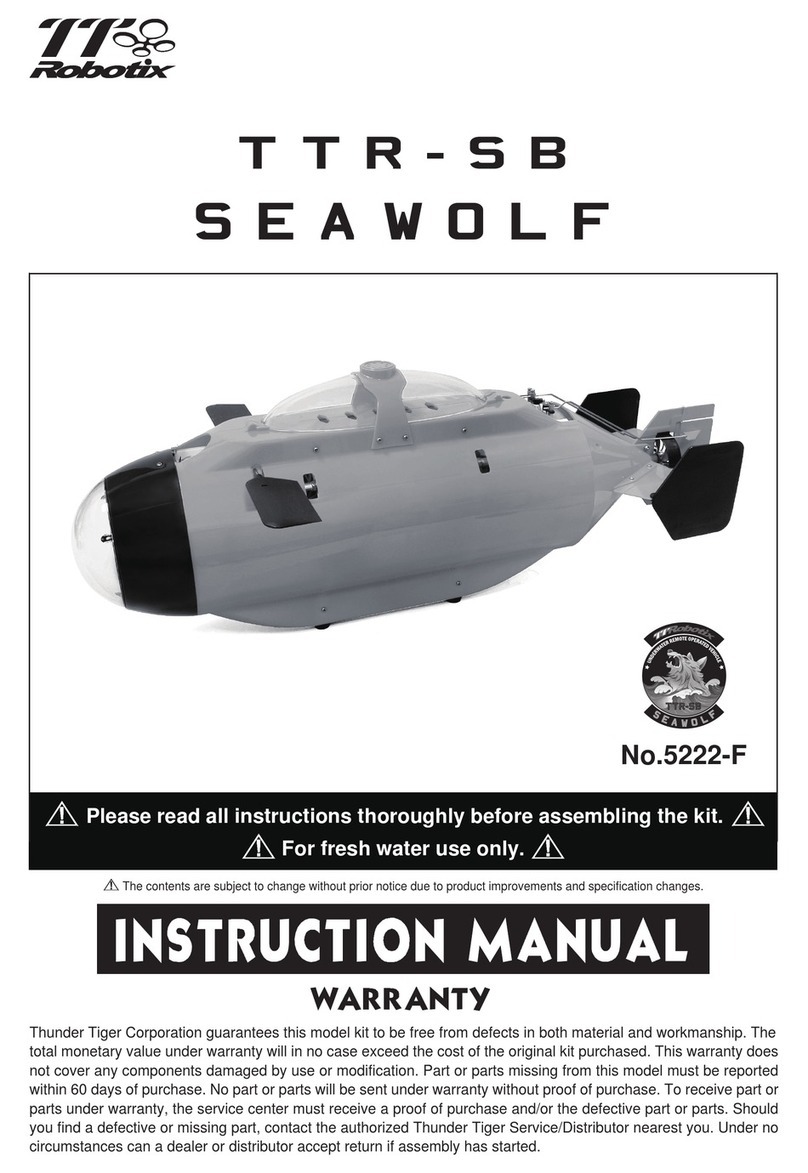
TT Robotix
TT Robotix TTR-SB Seawolf instruction manual
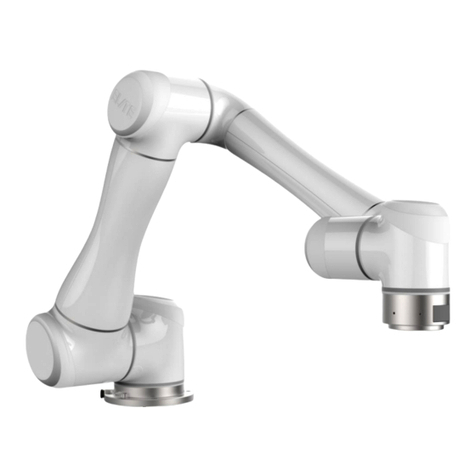
Elite
Elite EC66 user manual
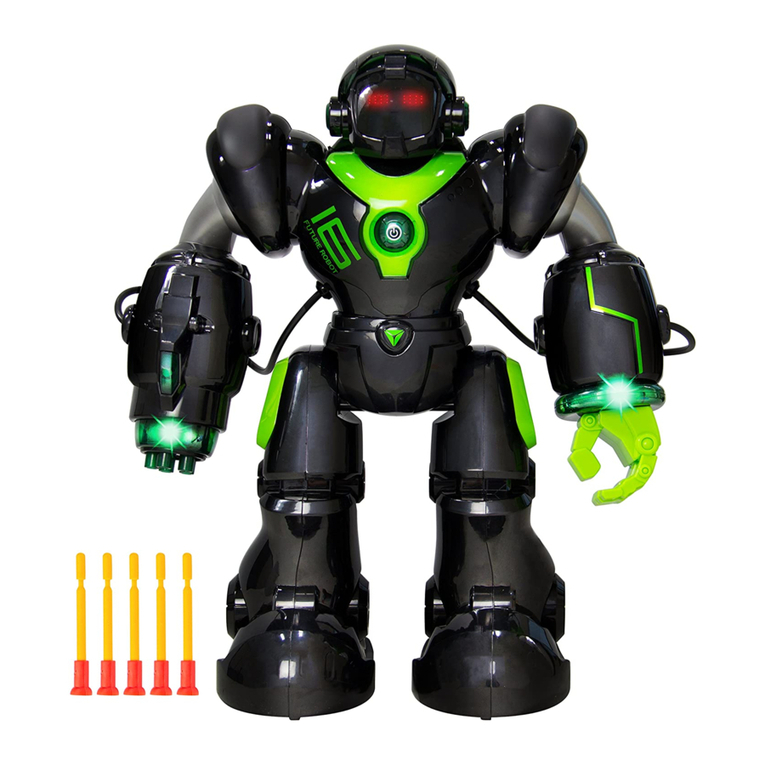
Best Choice Products
Best Choice Products SKY2908 instruction manual

DF ROBOT
DF ROBOT Maqueen Mechanic-Beetle Tutorial
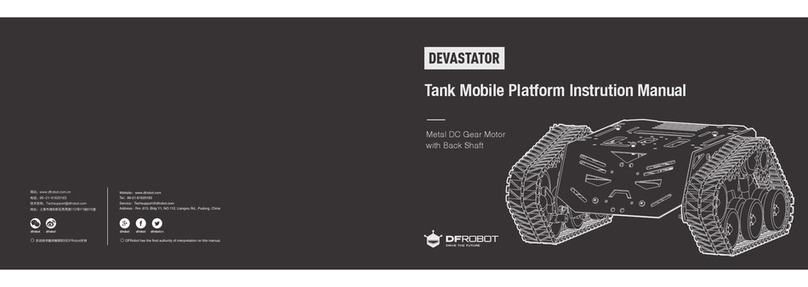
DF ROBOT
DF ROBOT DEVASTATOR instruction manual
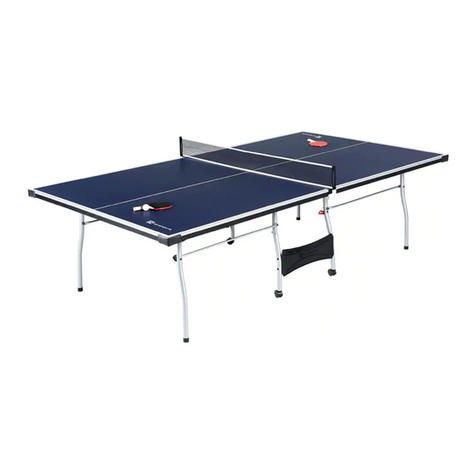
MD SPORTS
MD SPORTS TTT415 018M Series Assembly instructions
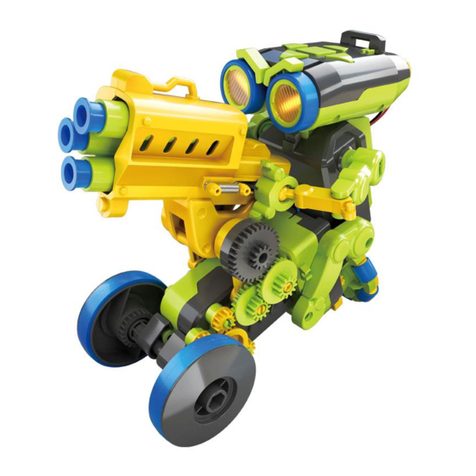
Pro's Kit
Pro's Kit GE-897 Assembly & instruction manual

Maverick
Maverick Motorized Robo Basket RF-63 operating instructions
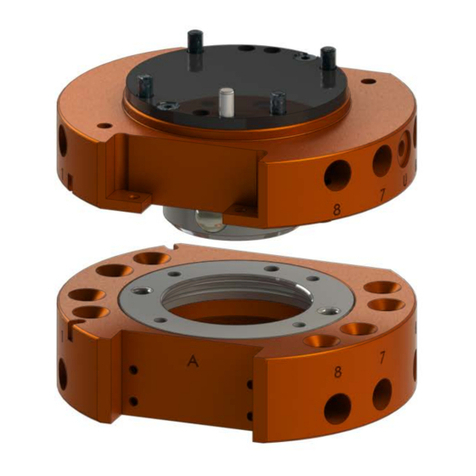
ATI Technologies
ATI Technologies QC-5 manual
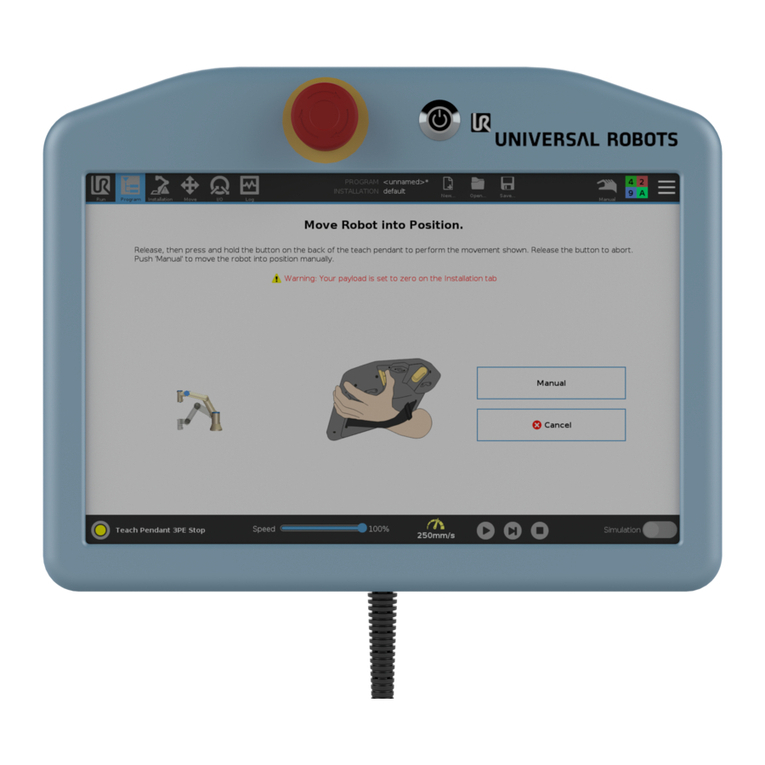
Universal Robots
Universal Robots 3PE Teach Pendant installation guide

Kitronik
Kitronik LINE FOLLOWING BUGGY V3 manual
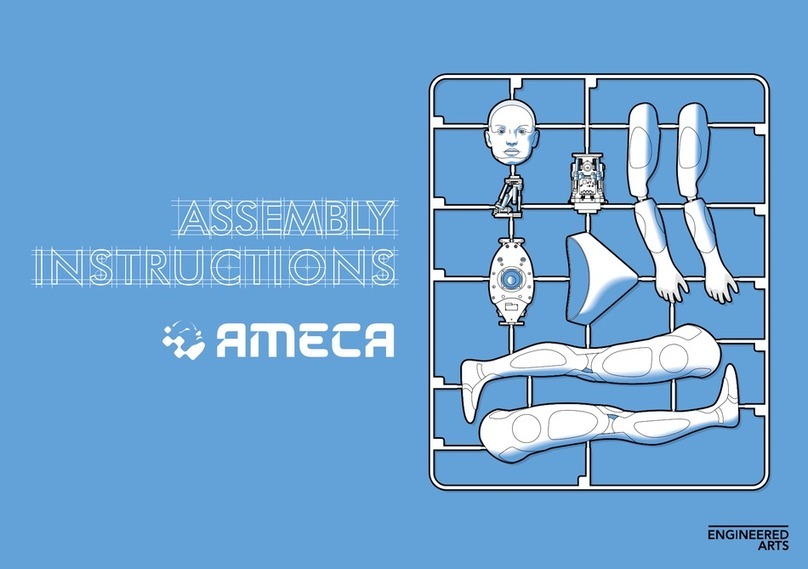
ENGINEERED ARTS
ENGINEERED ARTS Ameca Assembly instructions
